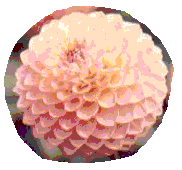DAHLIA CATALOGUE AND CULTURE GUIDE 1904
THE DAHLIA.
The Dahlia (Dahlia variabilis), a native of Mexico, was introduced in 1789
into Spain, whence it was sent in the same year to England by Lord Bute, who at
the time was representing England diplomatically at Madrid. The plant was named
in honour of Dahl, the Swedish botanist. Through a misunderstanding on the part
of Professor Willdenow, of Berlin, the plant was re-named Georgina, in honour of
the Russian botanist, Professor Georgi. Since 1832 the claim, on the ground of
priority, of the name Dahlia, has been undisputed in
England ; but in Germany the plant is still known as Georgina.
INTRODUCTION.
BY EDWARD MAWLEY,
President of the National Dahlia Society
IT is a mistake to suppose that the sole aim and object of the National Dahlia
Society is to hold one or more exhibitions each year, at "which all sections of
the Dahlia are superbly represented, and -which shall serve as models for
similar exhibitions throughout the country, in other words, that it is almost
exclusively a society of exhibitors.
The holding of such shows is certainly one of the objects of the Society, and a
very important object the Committee consider it to be. For exhibitions of this
kind not only encourage the highest forms of culture, but at the same time give
practical illustrations of the capabilities of what must be regarded as the
Queen of our early autumn flowers. Take, for instance, one section alone. Few
lovers of their gardens who have not visited a representative Dahlia show have,
even at the present day, any adequate idea of the remarkable beauty, and the
striking variety in form and colour that characterise the modern Cactus Dahlia.
Another object the Committee of the Society lies in view is to guide any new
developments of the Dahlia, that may from time to time arise, into their proper
channels. For, unless there be some recognised authority in such matters to
indicate clearly to the raisers of new varieties the types of flower it is
advisable to aim at, the progress made must necessarily be slow and uncertain,
even if it does not give place to retrogression. In the same way it is only
under the guidance of an authority like the National Dahlia Society that the
recognised standards by which such well-established sections as the Shows,
Fancies, Pompons, and Singles are to be judged can hope to be fully maintained.
But after all, the most important object of the Society must always be to
popularise the flower it represents, and to extend its cultivation throughout
the length and breadth of the land: no matter for what purpose it may be grown,
whether for the exhibition stand, the decoration of the garden, or the adornment
of the home.
To all classes of Dahlia growers the present little Handbook cannot but prove
welcome. For it is at once a Catalogue and an Instruction Book. It tells us what
varieties to grow, and at the same time how to grow them. Added to this we have
the satisfaction of knowing that both the Catalogue and the Instruction Book
have been compiled by some of the best living exponents of the art and craft of
Dahlia culture in this country.
Last updated
February 01, 2005
 THE GROWING WORLD OF DAHLIAS
THE GROWING WORLD OF DAHLIAS![]()